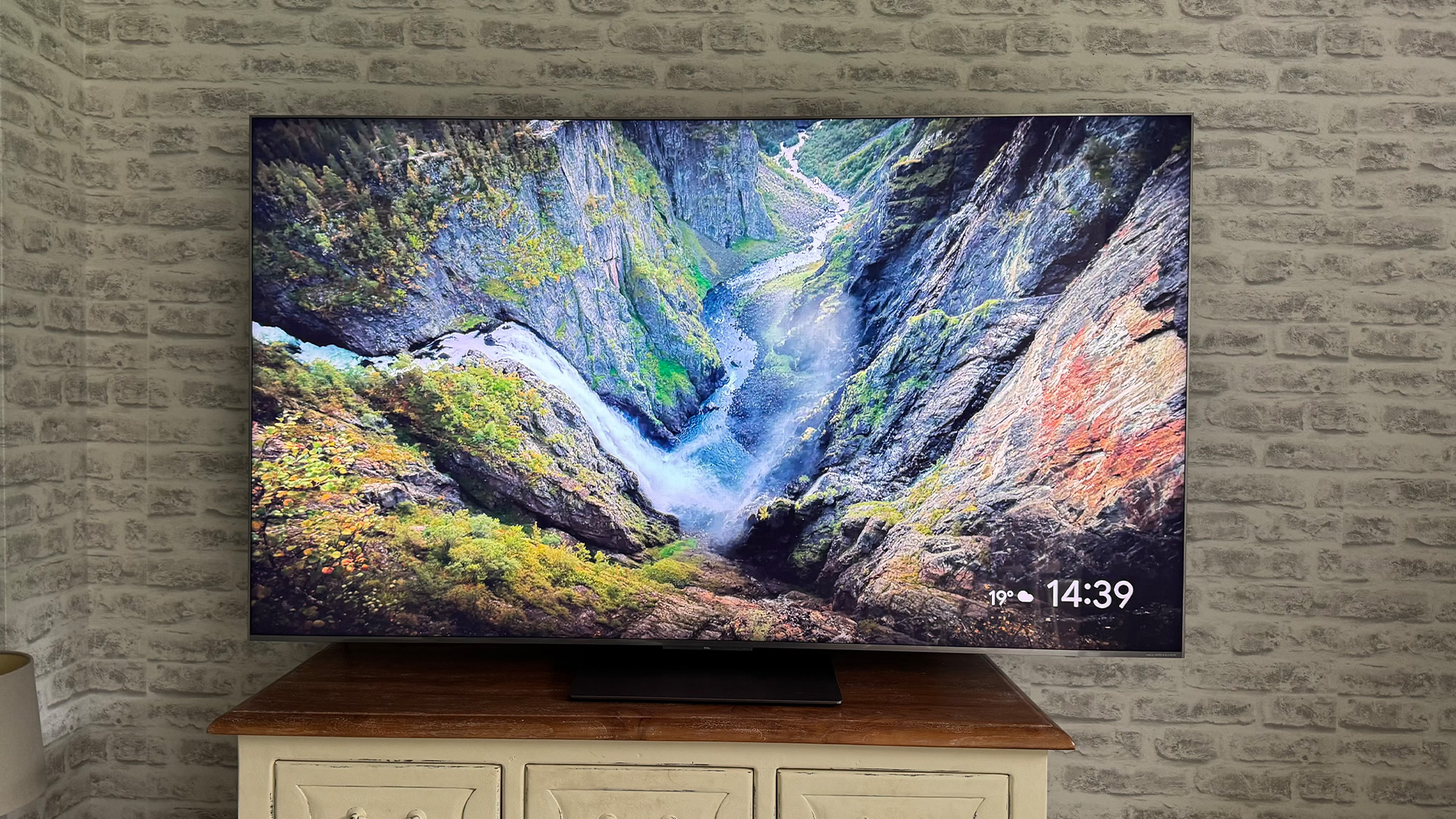What Hi-Fi? Verdict
The C8K’s winning blend of extreme brightness, outstanding backlight control and aggressive pricing makes it one of TCL’s most exciting TVs yet
Pros
- +
Excellent brightness
- +
Great backlight control and colour
- +
Good value
Cons
- -
Occasional misplaced audio focus
- -
Only two HDMI 2.1 sockets
Why you can trust What Hi-Fi?
Having thoroughly established itself as a serious – but also great value – player in the TV world over the past couple of years, TCL seems to have decided the time is right to go full kitchen sink with its 2025 TV range.
The brand’s new premium C8K range (the QM8K range in the US) is stuffed to bursting point with new technology, including a new AI-powered processor and an all-new LCD panel design that brings with it all manner of fancy-sounding innovations – including a so-called Halo Control system that sounds about as far up our street as an LCD screen technology even could.
With the previous C8 range already offering great bang for your buck, though, have TCL’s extreme ambitions for its new C8K really taken its latest TVs to a whole new level, or has the brand bitten off more than it can chew and ended up breaking something that didn’t need fixing?
Price

At the time of writing, the brand spanking new 65-inch TCL C8K we’re looking at here costs £1599 in the UK and $2695 in Australia, while the equivalent QM8K model in the US comes in at $1600.
In keeping with TCL tradition, these are pretty aggressive launch prices for a TV that, as we’ll see later, packs such a serious high-tech punch.
While the 65C8K’s pricing means it comfortably undercuts 2025’s similarly sized OLED TVs, though, it still finds itself up against some pretty stiff competition this year.
Sony’s 65-inch Bravia 7 and LG’s 65QNED93, in particular, have set a high LCD TV bar for the same sort of money. So all that shiny new tech in the 65C8K really is going to have to pay off if TCL wants to keep up with the Joneses this year.
The latest hi-fi, home cinema and tech news, reviews, buying advice and deals, direct to your inbox.
One further note on model numbers: TCL tells us that the Q8C, which you may see in some regions and at certain retailers, is identical to the C8K, though we haven't had a Q8C sample for testing, so we can't verify that.
Design
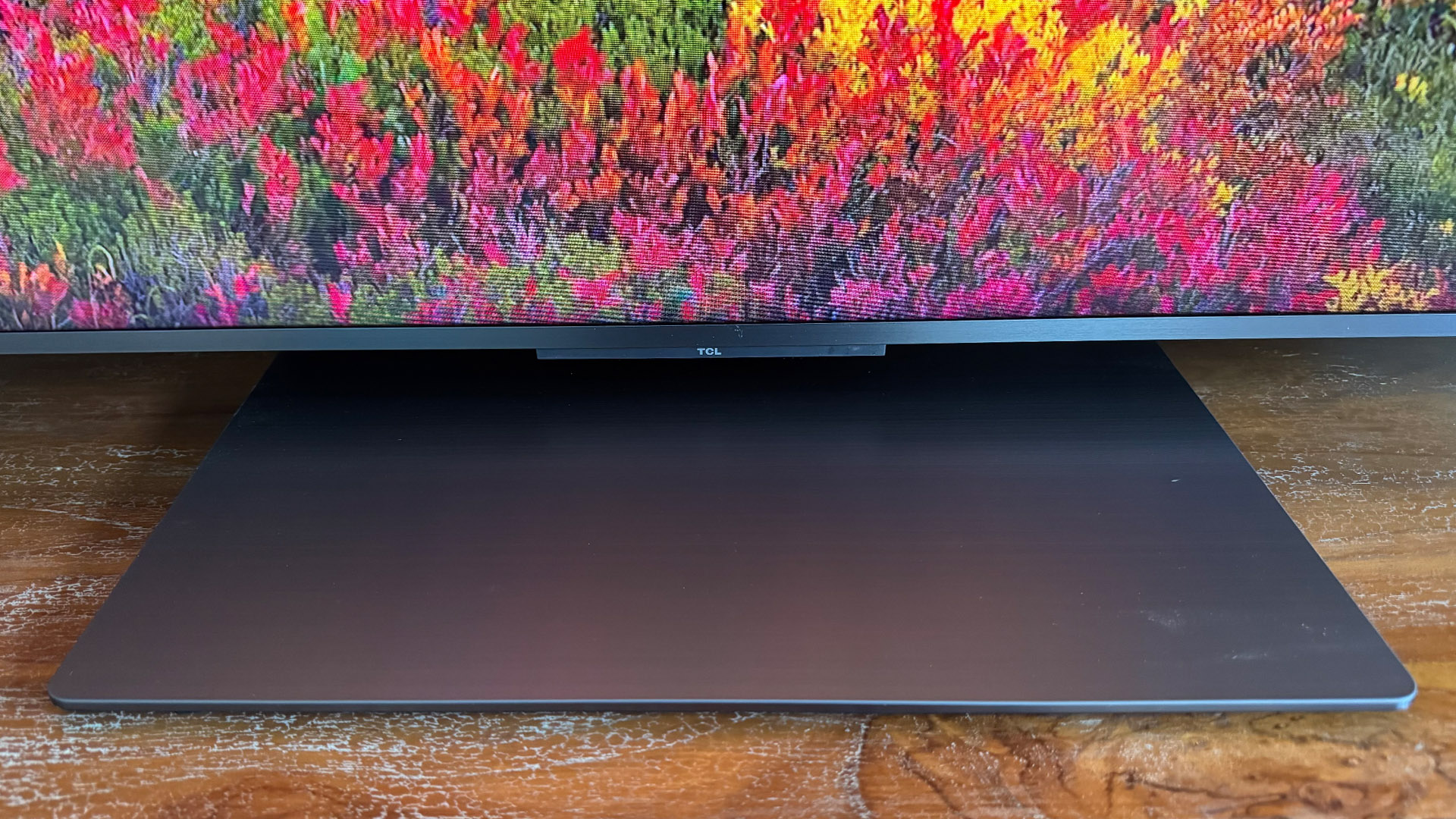
The C8K is both more attractive and better built than its TCL predecessors. The new ‘ZeroBorder’ frame around the screen really has been trimmed back to the point where it’s one of the slimmest around, and impressively, there’s practically no black border to be seen inside the screen area, either.
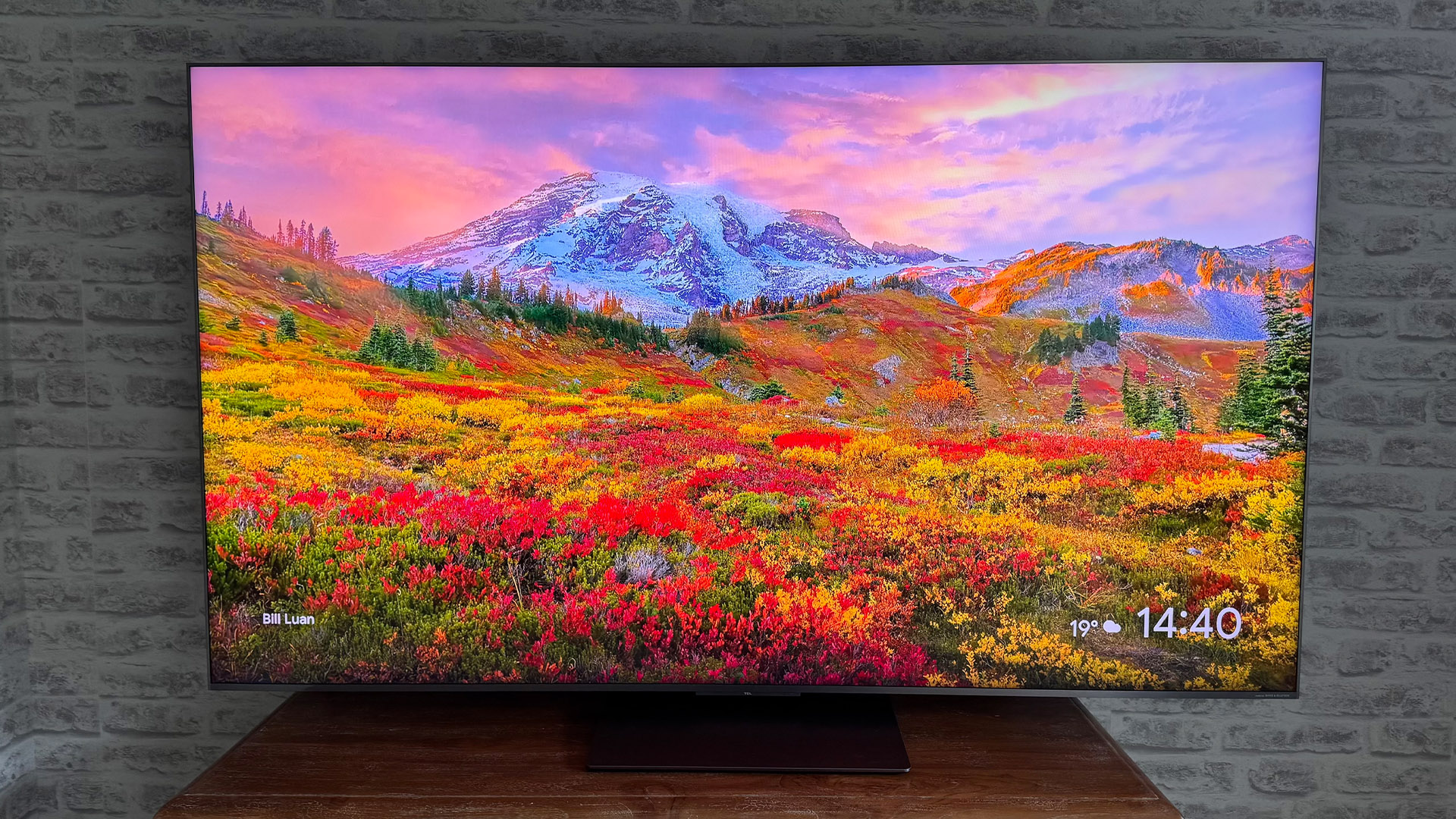
Screen size 65 inches (also available in 75, 85 and 98 inches)
Type Quantum Dot LCD
Backlight Mini LED (1680 dimming zones)
Resolution 4K
HDR formats HLG, HDR10, HDR10+, Dolby Vision
Operating system Google TV
HDMI inputs x 4 (x 2 48Gbps HDMI 2.1)
Gaming features 4K/144Hz, 4K/120Hz, VRR, ALLM, Dolby Vision game mode
Input lag 13.1ms at 60Hz
ARC/eARC eARC
Optical output? Yes
Dimensions (hwd, without stand) 83 x 145 x 5.9cm
The TV doesn’t stick out far around the back – impressive for a model that’s using a premium direct backlighting system.
The near-uniform flatness of the rear panel together with a cross-hatch pattern etched into it and neatly recessed connection bays and cable runs give the 65C8K true 360-degree design appeal, too, if you like that sort of thing. The premium feel is wrapped up by the gleaming brushed silver metal finish (aerospace-grade aluminium alloy, apparently) that’s applied to both the plate-style desktop stand and the TV’s slender side panels.
Add a sharply cut and metal-finished remote control to the package, and you’ve got a TV that manages to be stylish while still looking ‘serious’, and which feels like it’s worth every penny of its asking price. And then some.
Features
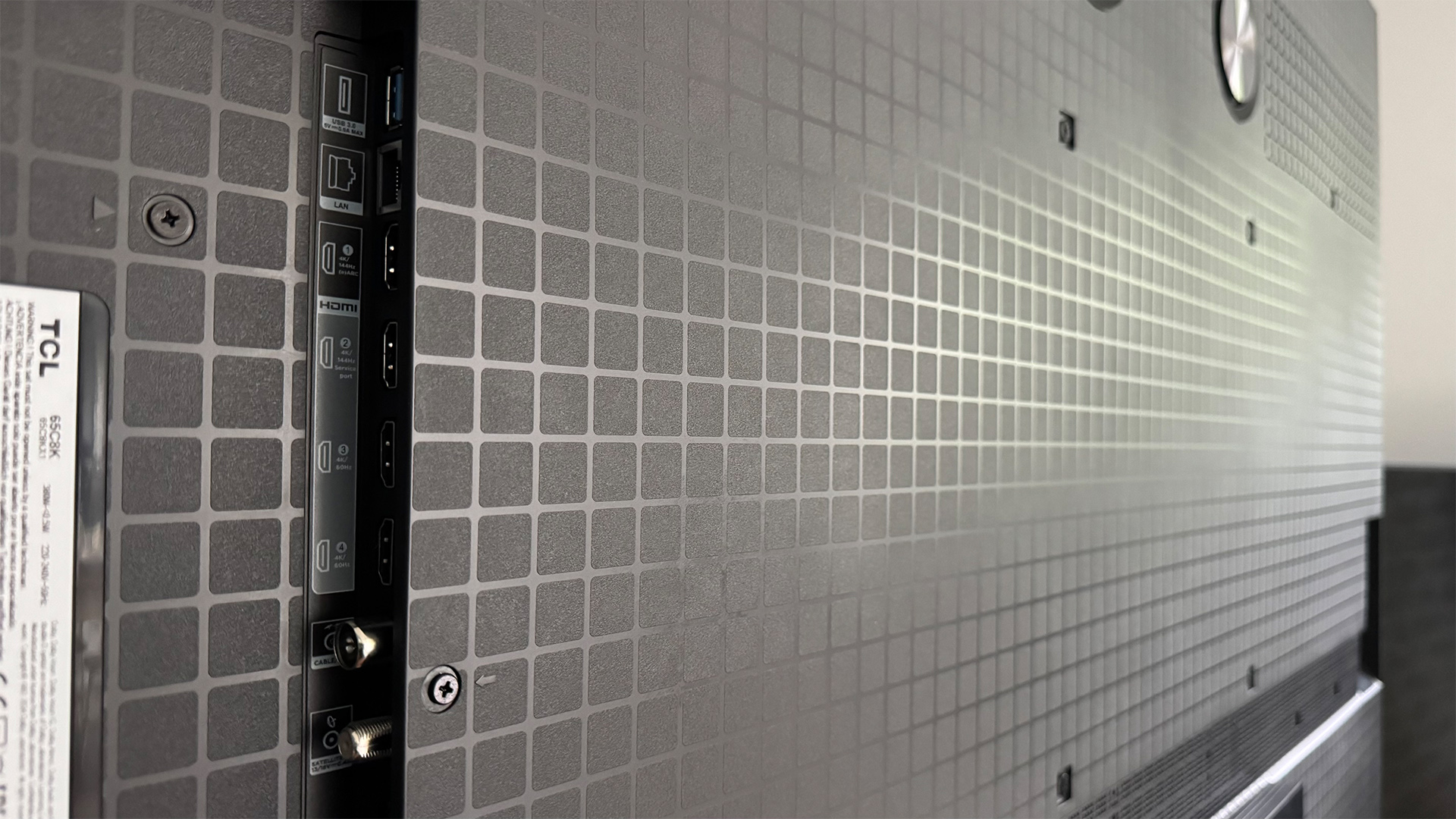
The C8K’s top line features are that it benefits from a 120Hz 4K Mini LED LCD panel with Quantum Dot colour, a premium local dimming light control system, and support for all of the key high dynamic range formats, including Dolby Vision and HDR10+. There’s actually way more going on beneath the C8K’s already eye-catching hood than this, though.
For starters, and as mentioned in passing earlier, it uses one of TCL’s home-grown new ‘CrystGlow’ WHVA panels. Highlights of this include ultra-reflective optical materials reckoned to enhance luminous efficiency by 97 per cent; a new level of LCD contrast for TCL that’s reckoned to deliver five times the contrast possible from rival IPS types of LCD TV screen; and a claimed 40 per cent improvement in the colour saturations the screen can reproduce when watched from wide viewing angles.
The local dimming system operates across a hugely impressive claimed 1680 separately controlled lighting zones, backed up by a new generation of light-emitting Mini LED chips, super-condensed mini LED micro lenses, an enhanced Micro-Optical distance system, faster transient response from the backlighting to reduce unwanted bright spots and dark ‘holes’ in the image, and a new ‘bionic’ bi-directional 23-bit light control algorithm. All of which adds up to a level of control over the entire light production path that’s far beyond anything TCL has been able to offer before.
While TCL’s marketing department is very happy to put up all this information on its latest panels for anyone to see, though, it’s probably sensible, given how complicated some of these technologies are, that TCL also covers it all under a relatively simple umbrella term of ‘Halo Control Technology’. This name tells you pretty succinctly that the ultimate goal of all these innovations is to maintain the sort of high brightness TCL’s premium TVs are already known for while simultaneously improving both the depth and the consistency of blacks – with a particular focus on dealing with the halos of light around bright objects that are such a common problem with locally dimmed LCD TVs.
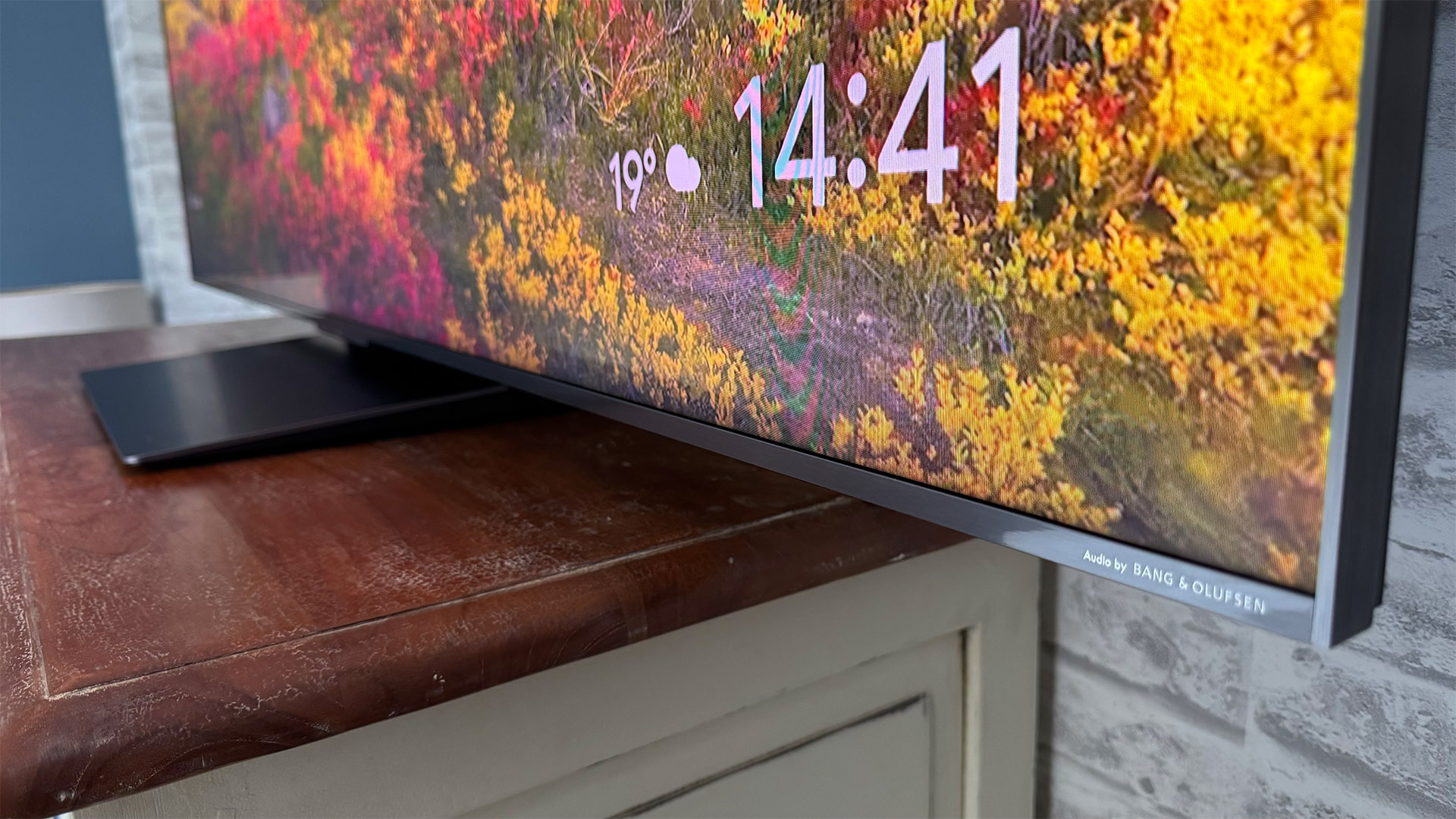
The 65C8K’s Quantum Dot colour system is claimed, in conjunction with the other panel innovations, to deliver more than a billion colour hues across 97 per cent of the DCI-P3 colour gamut used for most HDR mastering. A new Intelligent picture setting has been added to the picture presets, too. This analyses incoming images and optimises contrast, colour, sharpness and motion to try and deliver them to their best advantage.
The latest AI system also extends its tendrils into real-time sound quality improvements, enhanced interaction with the TV’s menus and smart features, and even the provision of more than 100,000 pre-generated AI artworks across a wide range of painting styles you can use as digital screen savers.
The C8K provides plenty for gamers to get their teeth into, too. The screen delivers a native 144Hz refresh rate, for starters, which obviously includes support for the 4K/120Hz graphics now output by PlayStation 5 and Xbox Series X consoles. There’s also claimed support, though, for 288Hz feeds (if you can find any!) via TCL’s Game Accelerator technology, which makes it possible to downgrade resolution in return for higher frame rates.
VRR is supported right the way up to that crazy 288Hz level, including in the AMD FreeSync Premium Pro format, and you can call up a dedicated Game Bar menu screen when game sources are detected. This provides access to multiple gaming aids and information on the incoming graphics.
The C8K also supports HDMI’s ALLM switching feature, where the TV will automatically switch into its fast-response game mode when a game source is detected. This Game mode reduces input lag to 13.1ms with 60Hz feeds, and just 5.2ms with 4K/120Hz feeds.
The only disappointment for gamers is that the full range of cutting-edge gaming features is only available on two of the TV’s four HDMI sockets, rather than all four.
Smart features are provided by Google TV, but TCL has handily managed to make sure the C8K avoids Google TV’s blind spot when it comes to UK catch-up apps. BBC iPlayer, ITVX, All 4 and My 5 all appear alongside such global big hitters as Netflix, Amazon Prime Video, Disney+ and YouTube.
There isn’t any support, though, for either the Freeview Play or Freely services that bring UK catch-up apps into a tidy umbrella interface; on the 65C8K you can only access UK catch up services through their separate individual apps.
TCL’s big ambitions for the C8K have even extended, finally, to its audio. It’s quite common these days for TV brands to work with third-party audio brands, but TCL has really pushed the boat out by partnering up for the C8K with Bang & Olufsen – one of the most premium brands in the AV world. We’ll be listening particularly carefully during our audio tests to see if such a meeting of value-oriented and no-expense-spared minds can really work.
Picture
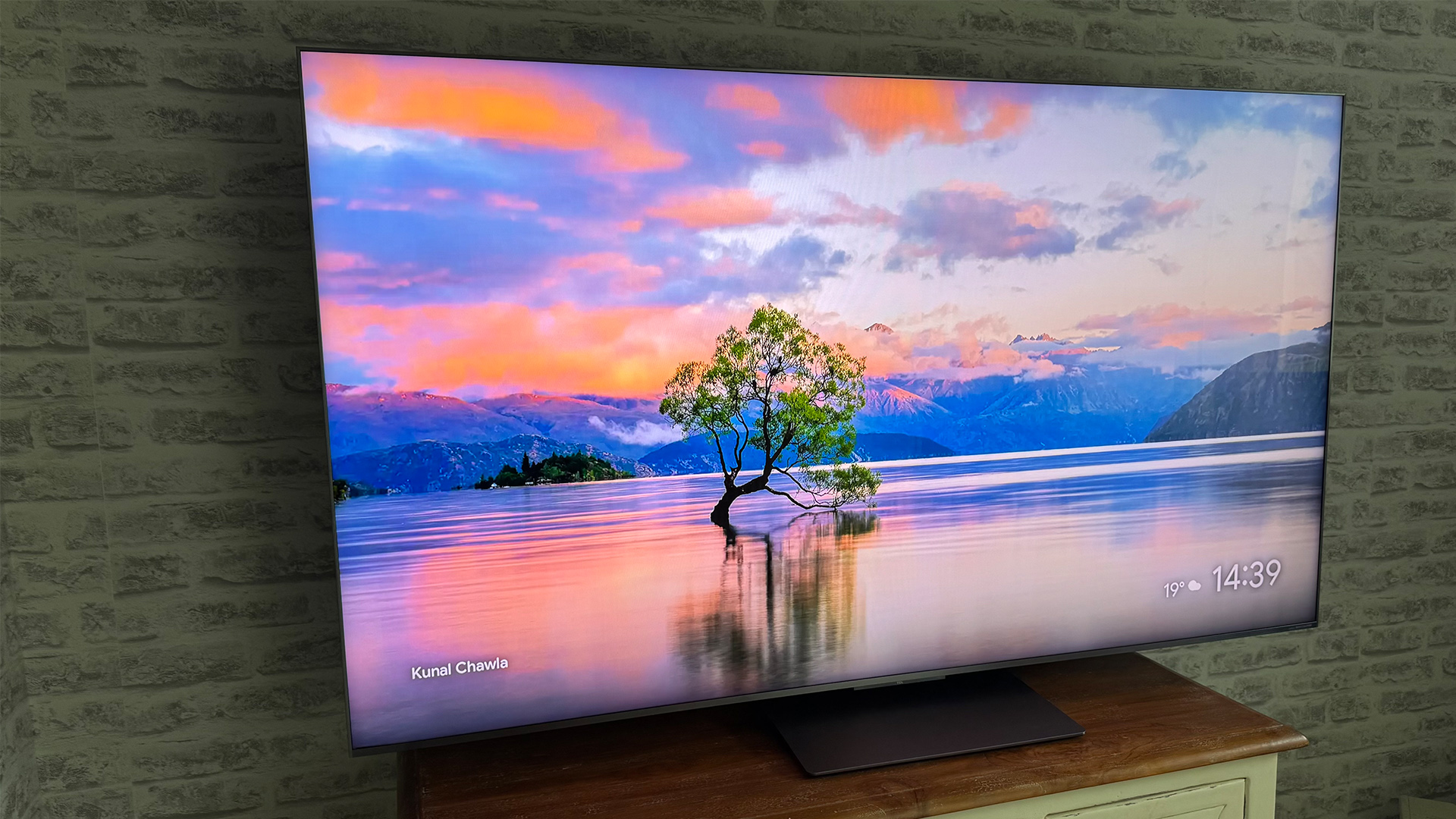
We went into more detail in the previous section about the new hardware and software features TCL has thrown at the C8K than we usually might for the simple reason that it all, thankfully, actually seems to work.
The first thing that hits us is how bright and vibrant the 65C8K’s images are. HDR movies blaze off the screen in the default Standard picture preset with way more intensity than we witnessed on the LG 65QNED93 and Sony Bravia 7 rivals we mentioned earlier – despite both of those rivals themselves being impressively bright for their money.
As well as making the 65C8K a great option for a bright room, the extreme brightness also contributes to one of the most flat-out impactful HDR images we’ve seen. Whether it’s a full-screen bright daylight image or a small bright highlight, it erupts off the 65C8K’s screen with truly glorious intensity.
The longer we hang out with the C8K, though, the more apparent it becomes that dazzling though its brightness is, what’s really special about TCL’s new TV is how well all that light is used. Rather than it causing images to look forced or gaudy, for instance, it combines with the Quantum Dot colour system and TCL’s clearly massively improved image processing to ensure that the screen’s gorgeous vibrancy combines with excellent tonal subtleties and blend finesse.
The subtlety and shading even extends right into the brightest colours and white highlights of the most aggressive HDR pictures, avoiding that flared out, clipped appearance you get with screens that can’t resolve full shading steps and details when running at or close to their brightness extremes.
The 65C8K’s combination of so much brightness and such subtle shading and tonal control, along with some really outstanding 4K sharpness and detail, helps its pictures create a sense of depth and solidity that really lures you into whatever you’re watching.
It turns out in the end, though, that the single greatest strength of the 65C8K’s pictures is something that doesn’t actually hit you right away: its ability to partner extreme brightness with some of the deepest, richest and most consistently deep blacks the LCD TV world has seen.
The reason we didn’t fully clock the 65C8K’s prowess in this area right away is because in some ways it’s a strength revealed by exclusion rather than addition. As in, you’re not seeing and being distracted by the usual nasty stuff such as haloes of extraneous light around stand-out bright objects, vague clumps of clouding over what should be very faint areas of shadow detail, or over-obvious inter-dimming zone light adjustments during dark shots.
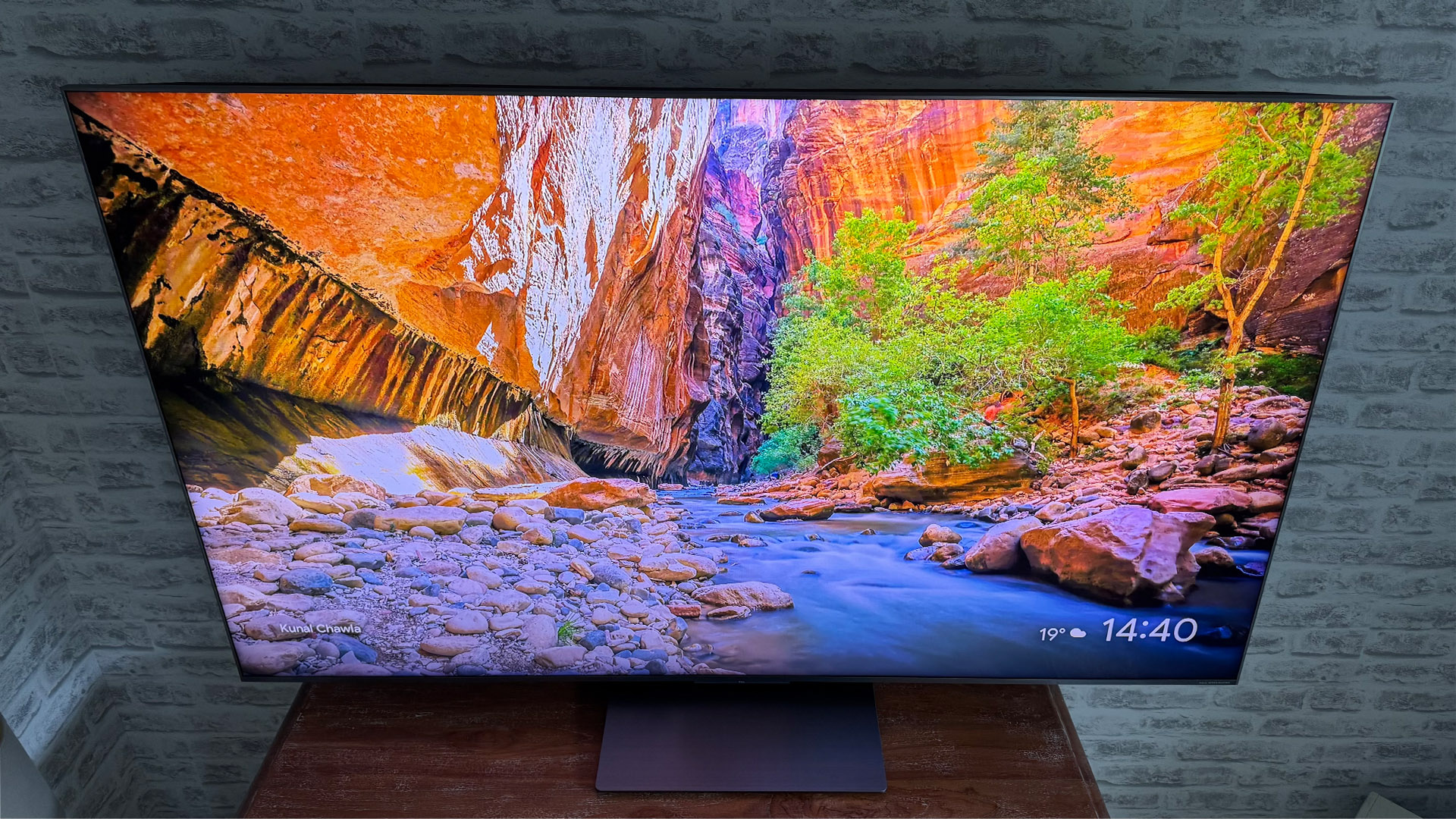
Nor does the 65C8K need to dim down the intensity of stand-out bright objects to keep a lid on the backlight blooming, and there’s no evidence either of TCL’s new TV heavily adjusting the image’s baseline brightness during hard cuts from dark to light shots, and vice versa. This all adds up to a level of consistency that would be impressive even on a much less bright TV than the 65C8K, but that becomes genuinely remarkable on a TV that’s capable of as much brightness and intensity as the 65C8K. All that fancy Halo Control technical talk is clearly much more than just hype.
While the new-found level of control TCL has found to go with the 65C8K’s extra brightness and bolder colours is at its most dramatic and enticing in the TV’s default Standard picture preset, it also, brilliantly, unlocks a whole new level of satisfaction with the TV’s most accurate Filmmaker Mode preset and the well considered Movie mode TCL has designed as a kind of mid-point between the Standard and Filmmaker Mode presets.
There’s nothing flat or drab about the 65C8K Filmmaker Mode’s adherence to key colour and brightness standards, and black levels remain both deep and free of haloing despite this mode inevitably cutting back on the amount of image processing being used.
Being able to provide both a punchy, eye-catching, screen tech-stretching picture preset option and an accuracy-focused preset option without either suffering with really any significant hardware or processing limitations or distractions is a rare achievement in even the premium TV world. And we are 100 per cent here for it.
Despite its many significant improvements over its already strong predecessor, the 65C8K isn’t perfect. While the Standard preset’s brightness and contrast are outstanding, for instance, its colours sometimes look a touch washed out in the brightest picture areas. More so, oddly, than they do in the same mode on TCL’s less bright C7K step-down models (which we’ll be reviewing soon). Our best guess on this is that the C8K’s brightness is so extreme in Standard mode that it pushes the Quantum Dot colour system slightly beyond its saturation comfort zone – a guess backed up by the contrastingly rich saturations you get in the C8K’s less bright Movie and Filmmaker Mode settings.
A few of the faintest shadow details in very dark picture areas can get crushed out of the picture, too (though not so much that dark scenes start to look hollow or flat), and the default Medium setting for TCL’s motion processing in Standard mode is a bit heavy-handed. Switching the processing to Low or even just turning it off yields very watchable results, though.
The Standard mode can look a bit blue in dark scenes, but this can be fixed by nudging the colour temperature a couple of notches up from its default position, and finally, for all its undoubted local dimming genius, TCL hasn’t quite managed to fully isolate its backlighting for the black bars above and below ultra-wide aspect ratio films. So you can sometimes spot faint traces of blooming in the bars if a very bright object appears right up against them. Though such blooming really is so faint that you may well not notice it unless you’re specifically looking for it.
You’ve probably noticed, though, that we’ve had to try pretty hard to find problems with the 65C8K’s pictures. And even where we’ve found one, it’s more often than not fixable through a simple tweak of one of the TV’s bounty of image fine-tuning features. So, in the end, we remain unshaken in our conviction that the 65C8K is one of the best-performing – especially when it comes to backlight consistency – LCD TVs we’ve seen.
Sound
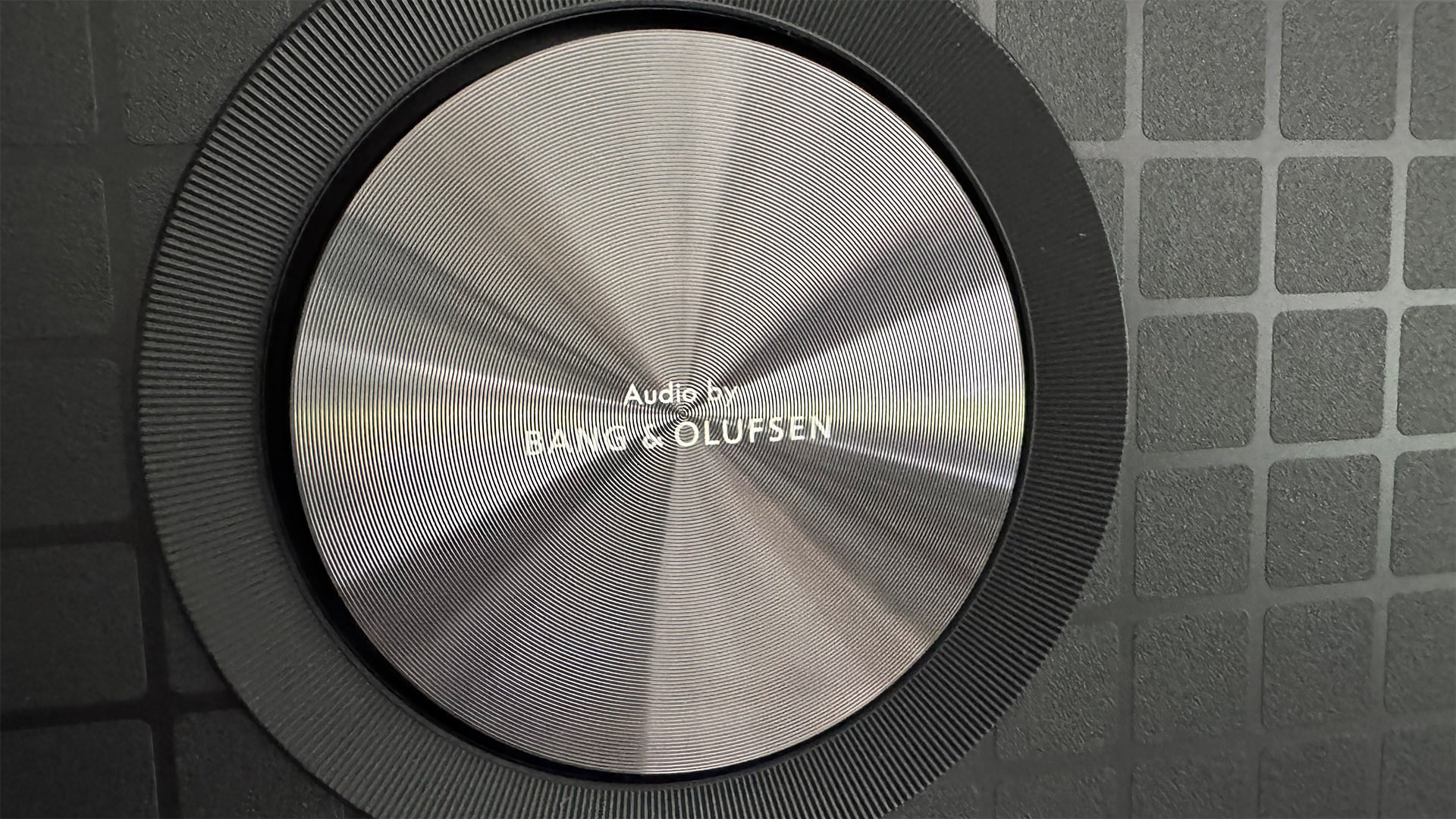
TCL’s new working relationship with B&O for the 65C8K’s sound system yields slightly mixed results.
On the upside, the speakers, which include a couple of sizeable circular midrange drivers embedded in the TV’s rear, clearly benefit from much better build quality than those you got in TCL’s previous 8 series models. The general tone of the sound they produce is cleaner and crisper, and they’re more sensitive, too, ensuring that not even the faintest element in a good movie mix goes unheard.
The result is a highly detailed, bright and clean soundstage that also projects beyond the outer extremities of the TV’s bodywork without losing cohesion or becoming brittle. This proves particularly useful in placing score and ambient effects correctly outside the rest of the ‘in-frame’ sounds, without those direct on-screen effects – including dialogue – becoming displaced or muffled in the process.
While the 65C8K’s premium midrange drivers deliver an open and dynamic sound in many ways, though, the lack of a dedicated bass driver of the sort we’ve seen on some previous TCL TVs can leave dense soundtrack moments feeling rather bass-light. This can contribute, too, to high-pitched sound effects sometimes coming across too brightly, with too much emphasis in the mix. Enough, at times, to cause what should only be small, background sounds to come to the fore way more aggressively than they should.
There’s enough B&O DNA in the overall tone and ‘hi-fi’ feel of the sound to ensure that the 65C8K’s sound is an overall improvement over that of its predecessor. But it’s not quite the class-leading audio effort we’d hoped for.
Verdict

If the welter of new screen and processing technologies TCL has developed for the 65C8K presented the brand’s picture engineers with any major teething problems to overcome, no trace of these potential issues remains in the finished TV.
Instead, you just get to marvel at pictures that combine TCL’s familiar brightness and punch with a stunning new level of refinement and naturalism – underlining in big red ink just how serious a TV player the brand has now become.
SCORES
- Picture 5
- Sound 4
- Features 4
MORE:
Read our review of the Sony Bravia 7
Also consider the LG 65QNED93
Best TVs: flagship OLEDs and budget LED sets tried and tested
John Archer has written about TVs, projectors and other AV gear for, terrifyingly, nearly 30 years. Having started out with a brief but fun stint at Amiga Action magazine and then another brief, rather less fun stint working for Hansard in the Houses Of Parliament, he finally got into writing about AV kit properly at What Video and Home Cinema Choice magazines, eventually becoming Deputy Editor at the latter, before going freelance. As a freelancer John has covered AV technology for just about every tech magazine and website going, including Forbes, T3, TechRadar and Trusted Reviews. When not testing AV gear, John can usually be found gaming far more than is healthy for a middle-aged man, or at the gym trying and failing to make up for the amount of time he spends staring at screens.
You must confirm your public display name before commenting
Please logout and then login again, you will then be prompted to enter your display name.
